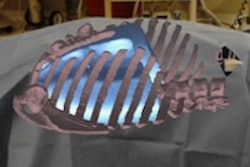Dear Imaging Informatics Insider,
Artificial intelligence (AI) technology certainly wasn't hard to find at the RSNA 2016 meeting in Chicago. Those who attended the scientific sessions and visited the posters and education exhibits witnessed firsthand the rapid development of machine learning -- particularly deep learning -- for a wide range of radiology applications.
For example, deep learning could be used to help identify imaging studies likely to contain emergent findings, according to researchers from Ohio State University. Our coverage of their presentation at RSNA 2016 is this edition's Insider Exclusive, which you can access before our regular members.
Machine learning could also be a boon for breast imaging, helping to assess a woman's breast cancer risk and reduce unnecessary biopsies, according to a pair of presentations. Click here for our report.
Although many radiologists view AI with trepidation, the technology does offer potential to help rescue radiologists from further isolation from the rest of the healthcare community. Dr. Mark Michalski of Massachusetts General Hospital explained why in a video interview with AuntMinnie.com Editor-in-Chief Brian Casey. In another video interview, Dr. Paul Chang of the University of Chicago separated AI's hope from hype.
Speaking of AI, some feel it might even lead to the unification of radiology and pathology into a single medical discipline. Learn why by clicking here.
Radiology has some important experiences to share as the healthcare enterprise continues to integrate technology into the practice of medicine, according to Dr. Robert Wachter of the University of California, San Francisco. You can access our coverage of his talk at the opening session of RSNA 2016 by clicking here.
In other news from the meeting, wearable visual overlay devices were found to offer some intriguing potential in radiology. Another study found that it helps to correlate radiology and pathology results directly in PACS software.
Dr. Christopher Austin from GE Healthcare also recently discussed how machine-learning applications in radiology offer an opportunity to transform the specialty.
Finally, it's worth the effort to develop a strategic and meaningful plan for enterprise imaging, according to a recent webinar held by the Society for Imaging Informatics in Medicine. Click here for 10 important lessons in enterprise imaging planning.
Is there a story you'd like to see covered in the Imaging Informatics Community? As always, please feel free to drop me a line.
Happy holidays from all of us at AuntMinnie.com!



















